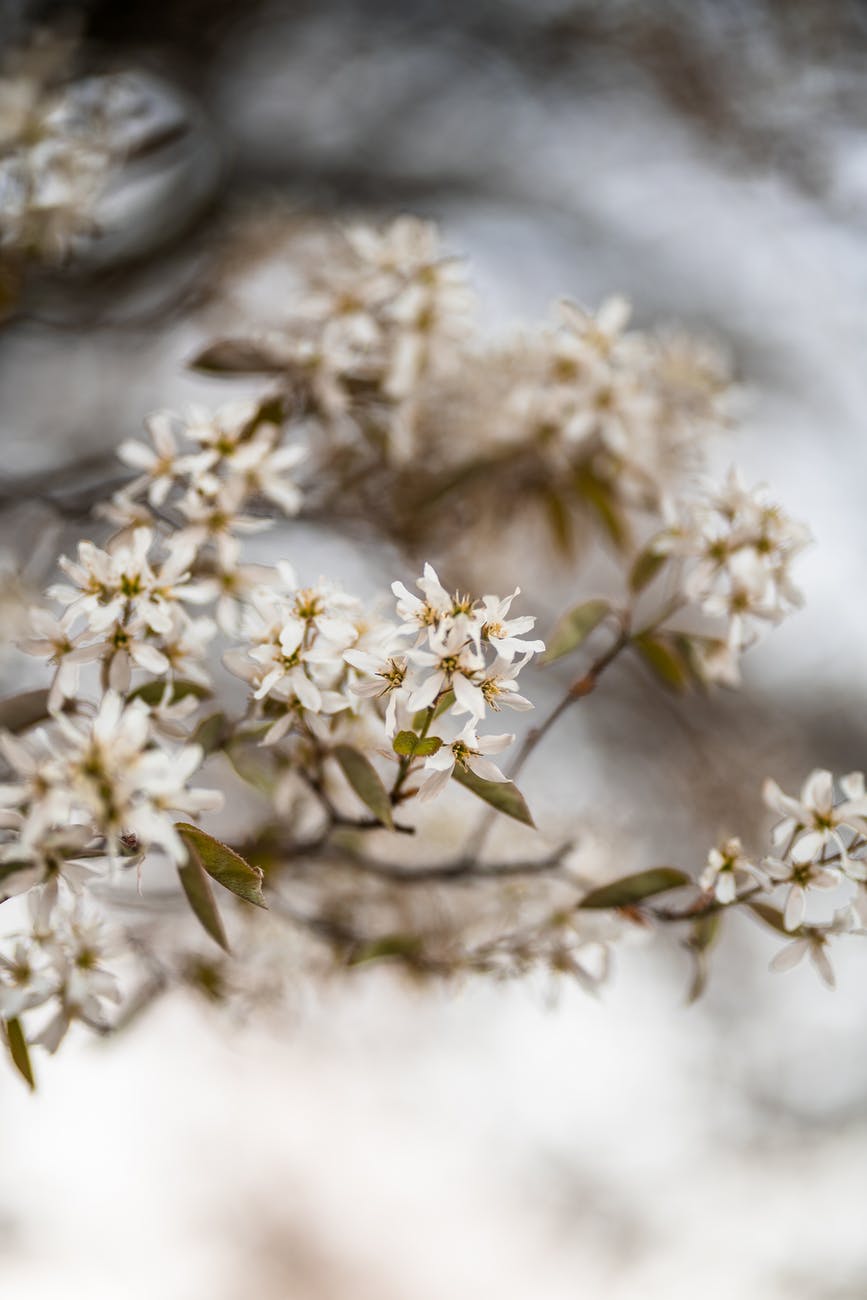“Sure, but what’s the latin name,” Heather asks about the tree that’s starting to bloom in small white blushed blossoms around the property.
Heather’s boyfriend knows it as juneberry, but she insists that it is serviceberry, hence going back to the scientific jargon to properly identify and name the plant beyond the regional nicknames. They both are correct: Amelanchier arborea is both juneberry and serviceberry along with shadbush, shadwood, saskatoon, sarvisberry, and sugarplum. The tree’s fruits present themselves in June, at least in areas where it’s known as juneberry, intuitively. The etymology of serviceberry is also intuitive, albeit more morbid: the first settlers in New England would plan funeral services around the time that the tree bloomed, the blossoms signifying that the ground had sufficiently thawed to be able to dig graves for funeral services. Memento mori was likely an easier disposition to maintain when conditions were harsh and unforgiving, so why not bake ones own inevitable mortality into the foliage vernacular?
The task of the day is to flag and label these trees to ensure that they’re not cut down when the boys are managing the forest later on in the year, when neither their flowers nor their fruits signal their importance or relevance. “AMELANCHIER” we write over and over and over again for the tags made out of cut up recycled beer cans. Carving the letters into the aluminum, the imprint will endure the weather better than a marker or pen and the metal will shimmer in the light obviously once it’s tethered to a tree limb. There’s always overgrowth and it’s easy, apparently, to get carried away when lopping and chopping down trees. I guess this is the way of men, to control nature, to dominate it.
As with all things though, there’s a balance. We live on the land as much as the plants do. Even though wild fires are not rampant in central New York, forest management is critical to reduce hazards of dying or diseased trees that could fall and crush the house or pig pen. This area, though highly forested now, is the product of clear cutting decades ago so most of the trees are the same, planted in an effort to restore the area. But monocultures are not a healthy forest, so trees should be removed to make room to plant more diverse species that increase the resilience and overall fitness and strength of the forest, this time the time span not being the next lumber harvest, but in perpetuity. Cutting down trees becomes an investment, a regenerative approach, and a hope that we can help restore the damage that had been done.
Much of the growth are, “invasive species.” This is a dirty sounding term to many invoking a sense of “they’re not from here,” made explicit by their common names. For example, the name “Japanese knotweed,” echos racist rhetoric present in their casual categorization as “weeds” here in the States. In other parts of the country, this same plant is called “Mexican bamboo,” evoking similar distaste for their presence. But Polygonum cuspidatum has come to thrive here given all the erosion, high salinity of the soil, and dryness and high temperatures that increase each year. As much as we like to blame them for outcompeting the native species, it’s to our credit that the environment is idyllic for their survival and their non-scientific names feel more like propaganda and a scapegoat.
To me, the flourishing of certain species feels like a stark contrast to the more morbid aura of the serviceberries. Rampant growth in the underbrush yet a signal that it’s time to be buried and mourn. It feels like a cancer, where cell growth and division — signs that might signify health and proliferation — means disease and sickness. Yet it’s a sickness that humans invited and invented, it’s a manifestation of a changing ecosystem, a harbinger of transformation (though a transformation to what is yet to be determined). Just how much we are able to mitigate feels uncertain. Just how much we should moderate given how we (both humans in general and us in particular) have messed up in the past no matter how good our intentions had been.
Yet amongst the uncertainty, we bend wire around limbs of the delicate blossoming trees, their true and more objective feeling latin names dangling like dog tags dancing in the spring breeze. And perhaps instead of — or indeed alongside — being haunted by impending and unavoidable death of our selves and potentially the planet, we can, for now, look forward to juneberries to transform into pies for the summer, and jams that’ll be enjoyed in the depths of winter.
This piece was written for a writing accountability group and it’s encouraging me to write and publish more essay-style content. I’ve long been fascinated by non-fiction writers (especially Rebecca Solnit) who weave narrative through the presentation of facts and memoir. So here’s to an experiment in my own writing. Let’s see where it takes us.


Leave a Reply